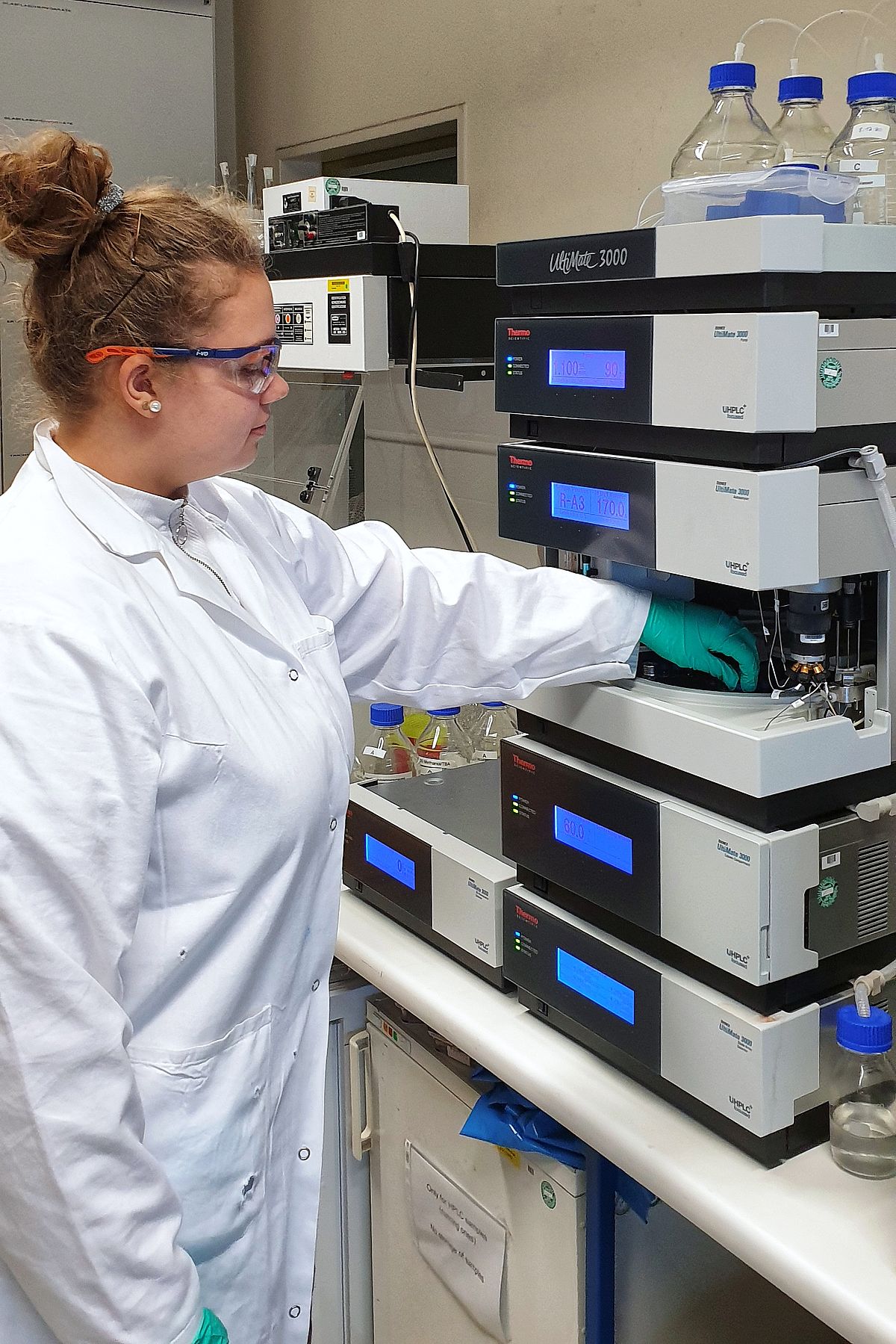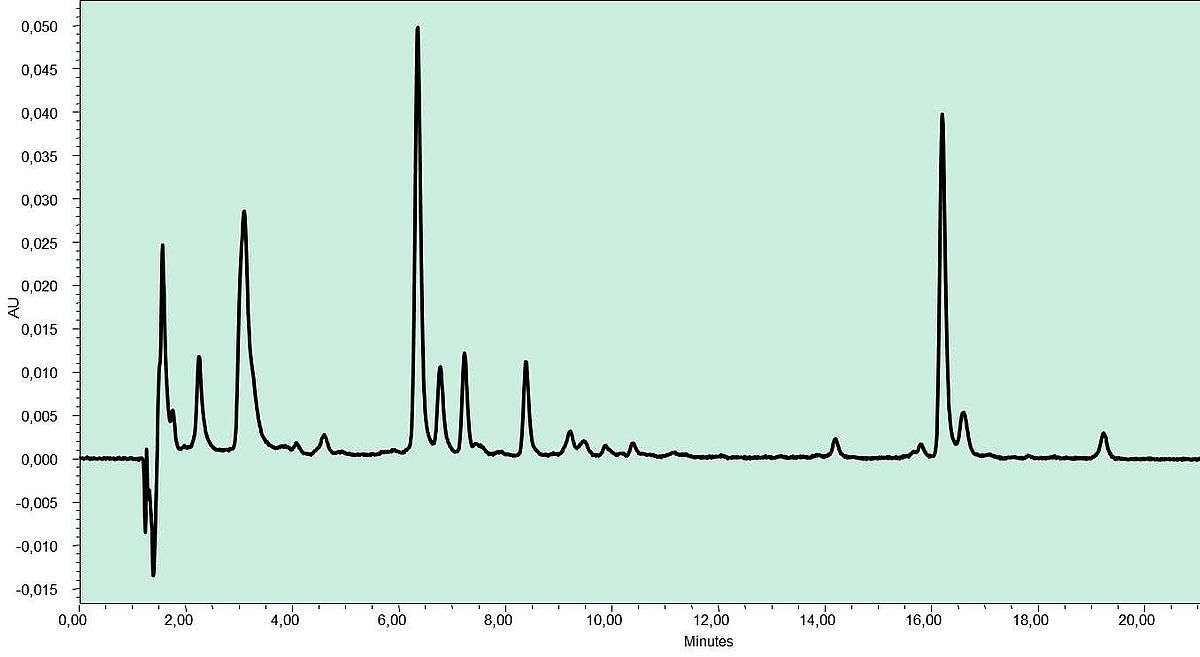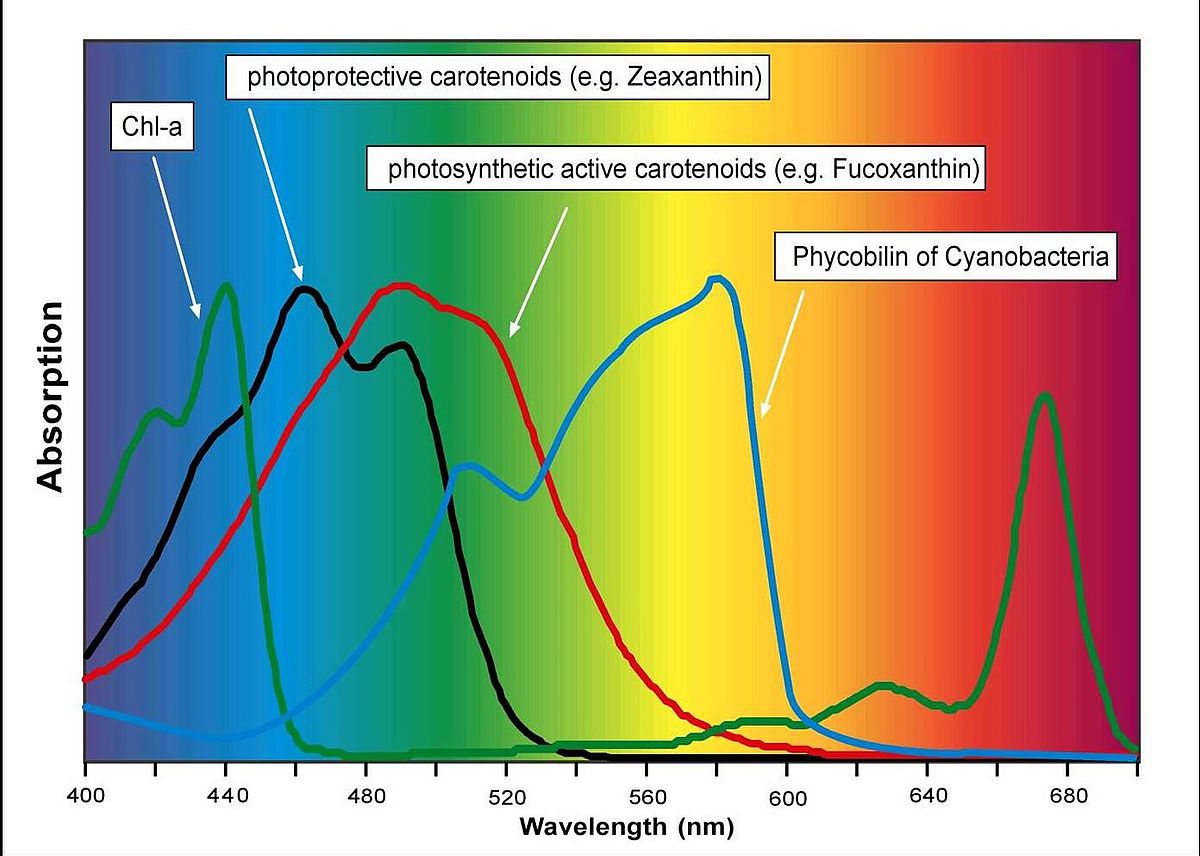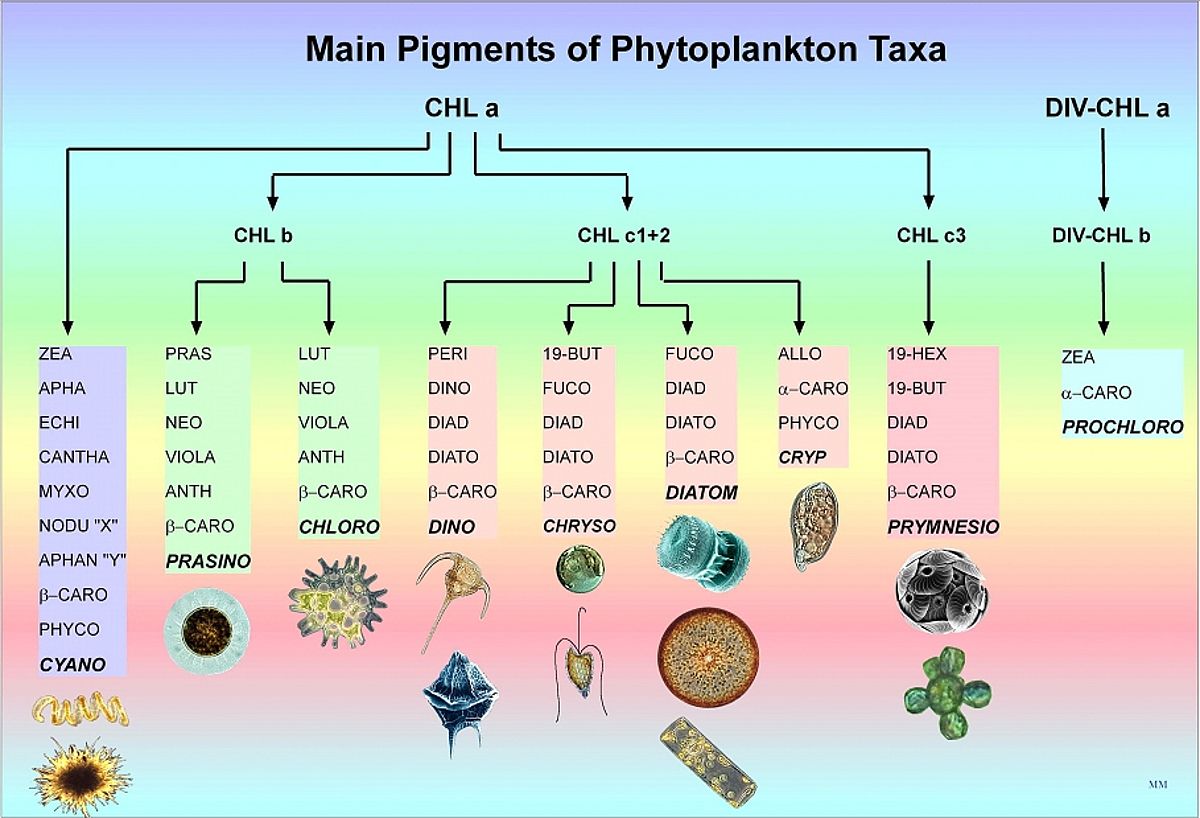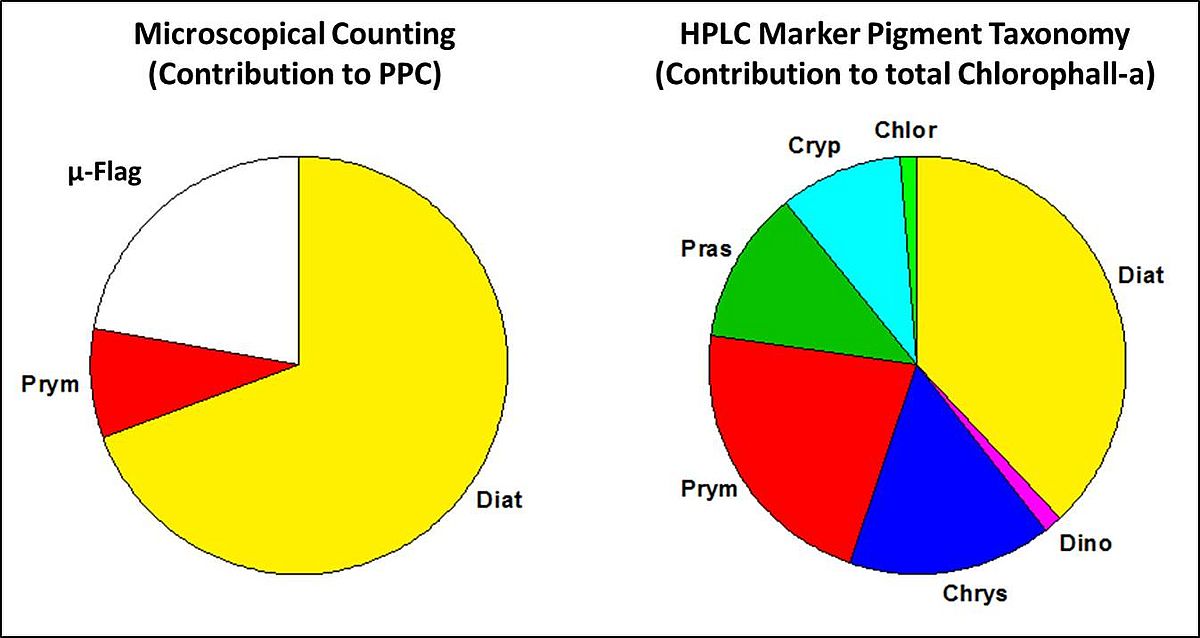Pigments in aquatic ecosystems
Three main groups of plant pigments occur in phytoplankton: The liposoluble Chlorophylls and Carotenoids, as well as water-soluble Phycobilins. The first two groups are found in all eukaryotic algae and in the prokaryotic Cyanobacteria and Prochlorophytes. The Phycobilins are unique to Cyanobacteria, Crypto- and Rhodophyceae.
All Chlorophylls, Phycobilins and most of the more than 100 Carotenoids have the task of absorbing light for photosynthesis. Some of the Carotenoids act as protecting mechanism of the cells against photo damage.
All pigments, except Chlorophyll-a, are referred to as "accessory" pigments.
The HPLC – system (Fig. 1) is designed to analyze the Chlorophylls and Carotenoids as well as their derivatives. The system detects the pigments by means of their absorption and fluorescence. As result of the analysis one obtains a "chromatogram" on which each of the pigments present in the sample appears as a separate peak (Fig. 2). Characteristic for each pigment are both its "retention time" (the time it takes to elute at the end of the separation column) as well as its absorption spectrum (Fig. 3). By calibration of the system with pure standards the pigments can then be determined both quali - and quantitatively.


